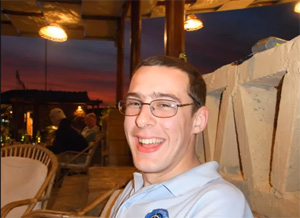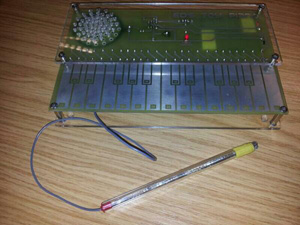When Staffordshire University student Edward Holmes was offered a place at a Science and Engineering summer camp in the US, he was asked to design a project to take with him. He will be teaching electronics to local schoolchildren, so inspired by his love of circuitry and the digital sounds of the Stylophone, he came up with a product made entirely with components sourced from Rapid.
Using the skills gained from his Electronic Engineering degree course, he has designed a toy piano that uses a 555 timer chip and replicates the different notes made by a real piano. “The 555 timer is a really versatile chip and it seemed like a good starting point to introduce the children to ICs”, says Edward, who starts his placement in Pennsylvania in June. “When speaking with the program director from the camp, he told me that the children loved projects that made noise or flashed lights and so it got me looking for circuits and ideas that would not only be fun, but also relatively easy to understand the theory behind them.”
Edward's first inspiration was a circuit in Forrest M. Mims' influential book Volume I – Timer, Op Amp & Optoelectronic Circuits & Projects. Mims' circuit consisted of a 555 timer and various selectable capacitance values wired in parallel. However, to replicate the notes made by piano keys Edward thought that using resistor values would be a better solution than capacitors. “Initially I thought of just chaining lots of 1K resistors together and using a stylus to select the note I wanted, the further along in the chain, the higher the resistance and lower the frequency. Then it occurred to me, surely I could reproduce the different frequencies of actual notes?”
Edward found the range of frequencies contained within a particular set of notes (in this case two octaves starting at Middle C), and calculated the appropriate resistor values to which these corresponded. “I worked out which values I needed and then worked out the actual output frequency, assuming 0% tolerance on the resistors. This allowed me to calculate the difference between the real frequency and the actual frequency. I was surprised to find out that the maximum deviation was only 1.32% with most notes having less than 1% deviation.”

